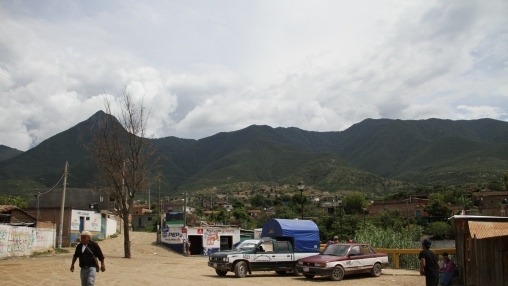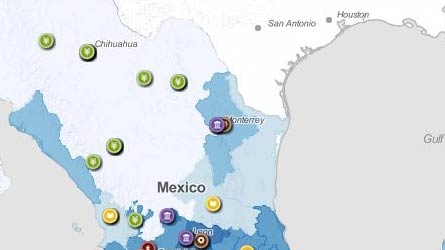Results
The World Bank’s comprehensive engagement has proven to be a successful strategy to support the reform agenda for the inclusive growth of Oaxaca. The strategy has led to the following main results
- Government counterparts have built up technical capacity in the different areas of reform (e.g., trainings and workshops in strategic sector planning, public investment, water utility management, forestry management).
- The Bank has informed policy design and implementation.
- Resources have been mobilized leveraging co-financing of other organizations, such as the UNDP, the MacArthur Foundation, and Transparency International–Mexico.
- A concurrence of key national and local stakeholders has been brought together to participate in a specific development agenda.
- Concrete and fundamental tools for efficient policymaking have been generated.
Several outputs have been produced from this partnership to modernize the State of Oaxaca’s public institutions and policies:
- Design and implementation of a methodology to structure strategic sector planning oriented to results.
- Proposals for integrated public financial management and public investment management systems.
- Strengthened tax administration capacity.
- The mapping of existing social programs.
- Exchange of good practice approaches to reduce maternal mortality.
- Support to the consolidation of rural financial institutions.
- Exchange of good practice approaches on public-private partnerships.
- Strengthened water utility management.
- Atlas of Climate and Climate Change.
- Exchange of good practice approaches on sustainable development.
Bank Group Contribution
During 2012-2013 the specific engagement of the Bank can be summarized as follows:
- 10 activities have been concluded, 17 are under execution, and 3 new activities will be initiated during FY14.
- A total of US$1.3 million was executed during FY2012-2013 as part of the partnership between the World Bank and the Government of Oaxaca. This amount does not include: (i) the resources of a loan and a grant from the Global Environment Facility (GEF) committed for the construction of solar farms in 12 villages of Oaxaca (US$ 9.5 million), and (ii) an electricity tariff subsidy from the GEF committed for the energy produced by the wind farm La Venta III (US$8 million for FY2014-2015).
- Around 70 specialists in 75 different technical missions have been to Oaxaca, either as technical experts providing support to policy reforms or sharing experiences in seminars and forums that have been organized to strengthen the institutional capacity of the state.
- The International Bank for Reconstruction and Development (IBRD) and the International Finance Corporation (IFC) have been working together to define and enhance coordination arrangements to deliver the joint World Bank Group program based on a better understanding of the development challenges and priorities facing the people of Oaxaca. The IFC, for example, has contributed to the promotion of public and private associations in the state.
Partners
The World Bank has maintained close partnerships with other donors in Oaxaca. For example, the Bank has worked closely with the United Nations Developed Programme (UNDP) and the MacArthur Foundation, in the design of a pilot to reduce maternal and neonatal maternity. Moreover, Mexican Transparency and the UNDP, in conjunction with the Bank and the Government of Oaxaca, organized a workshop to improve transparency and accountability in the water and sanitation sector.
Although most of the funds to develop the MoU program come from the Bank’s budget, resources have also been leveraged from other donors including the Global Environmental Facility (GEF), the Institutional Development Fund (IDF), and the Financial Sector Reform and Strengthening Fund (FIRST).
Development solutions to improve competitiveness and the business climate in Oaxaca have also been explored through the Foreign Investment Advisory Service (FIAS), a joint facility of the IFC and the IBRD.
Moving Forward
Development challenges in Oaxaca are structural and require sustained long-term support in order to shift the current trends. The Bank and the Government of Oaxaca will expand the Bank’s ongoing analytical and operational activities during the next two years. Mexico’s Ministry of Finance has also asked the Bank to expand the Oaxaca’s thematic MoU model to the states of Guerrero and Chiapas. This support, both at the federal and state levels, will reinforce the Bank’s subnational engagement in Mexico.
The MoU for FY2014-2015 is composed of 20 activities. Most of them are the continuation of the work that was carried out during FY2012-2013, and a set of new activities has been identified to accompany the Government efforts and strengthen its agenda. For example, an assessment of the Government’s accounting harmonization status and a project on sustainable production systems and biodiversity.
The Bank’s knowledge program on Oaxaca will also be supported by Reimbursable Advisory Services (RAS). Reimbursable Advisory Services are an increasingly important way for the Bank to meet Oaxaca’s demand through the provision of customized advisory services. In June 2013, for instance, a RAS to Strengthening Public Sector Management was signed between the Government of Oaxaca and the World Bank and the activities in this program will contribute to the improvement of the quality and efficiency of the State of Oaxaca’s public expenditure management.
Beneficiaries
The main beneficiaries of this partnership are the Government officials who have improved their technical and management capacities and have new tools to take better decisions. The final beneficiaries are the citizens that will receive better services due to better management systems and informed decisions from policymakers.

